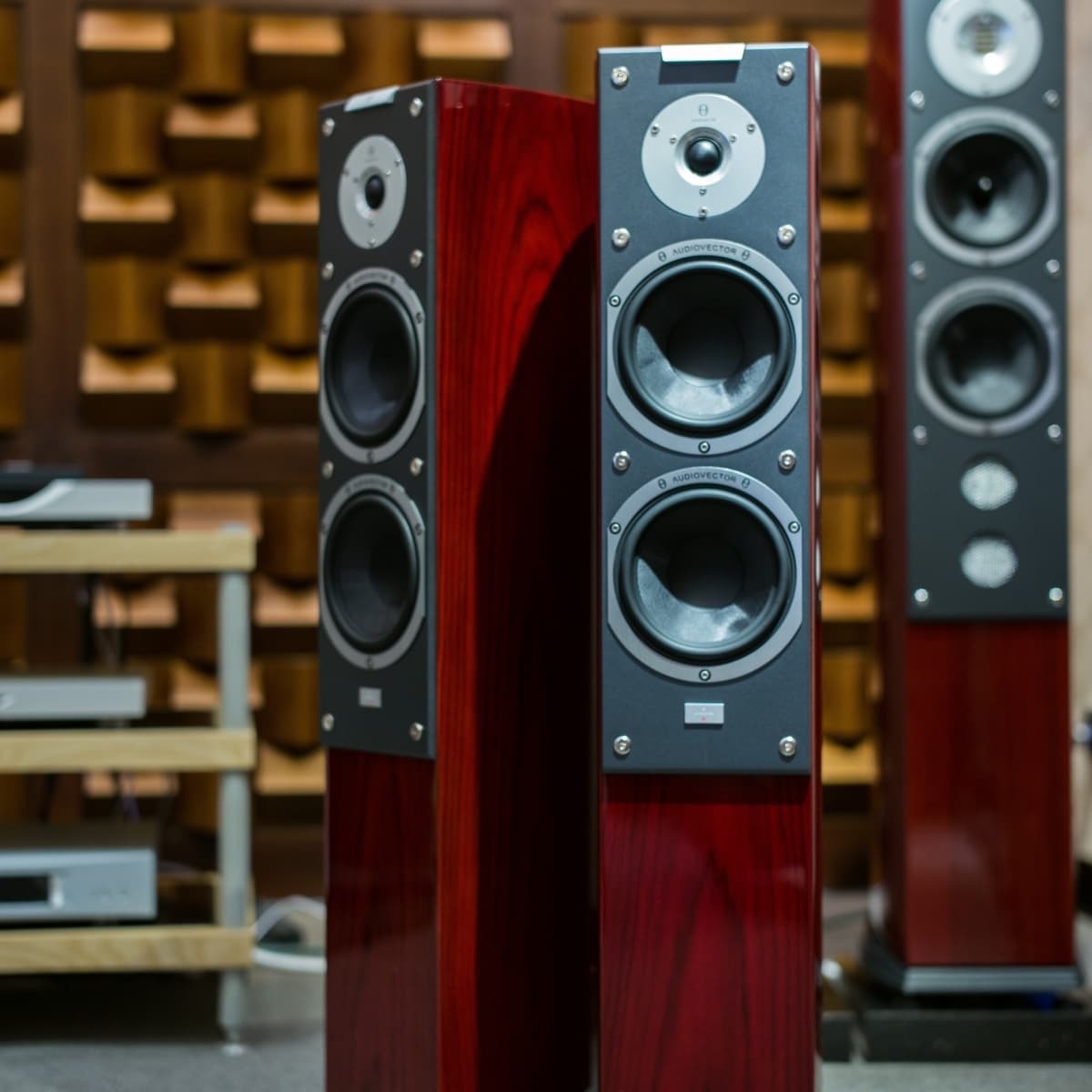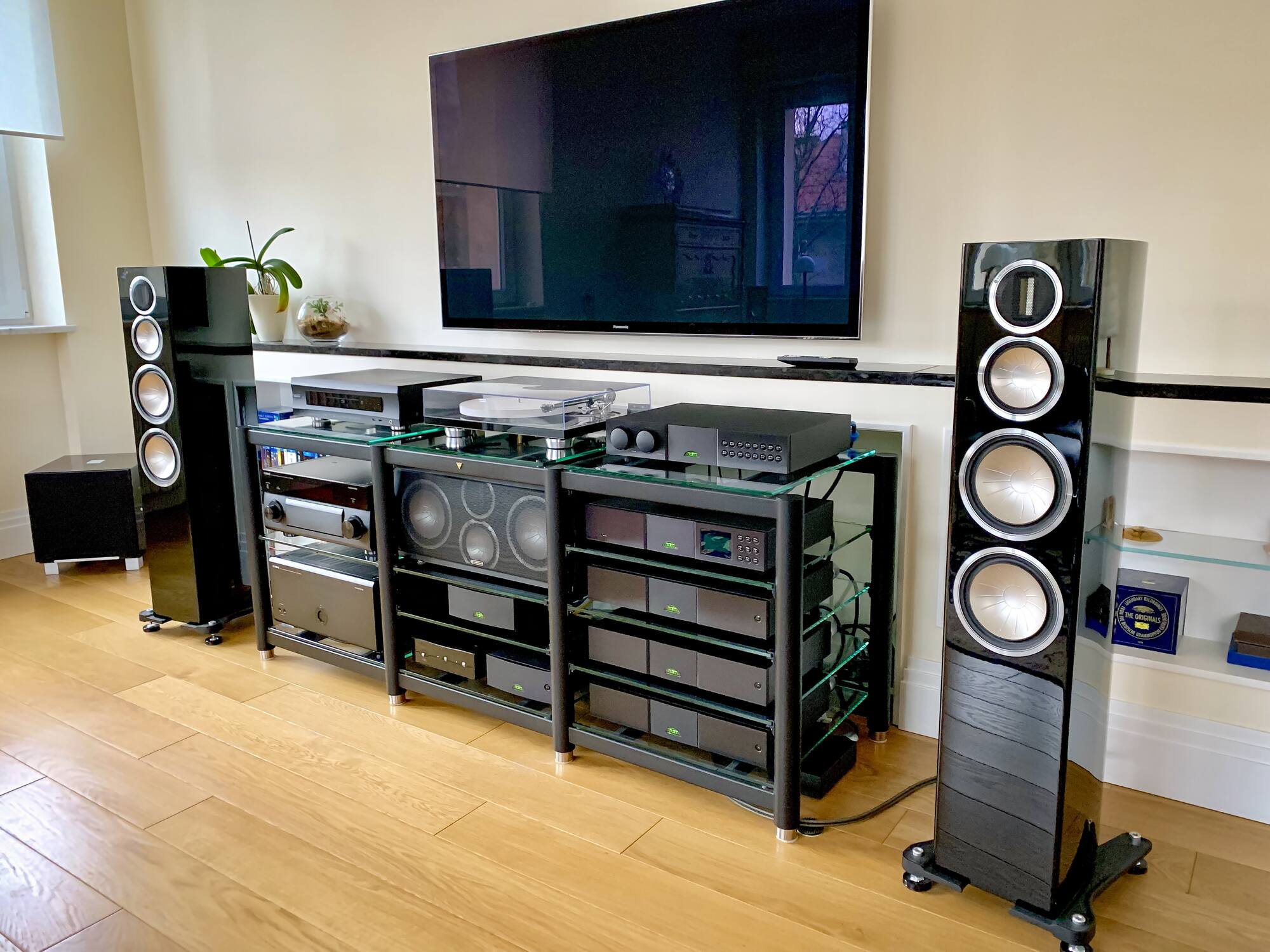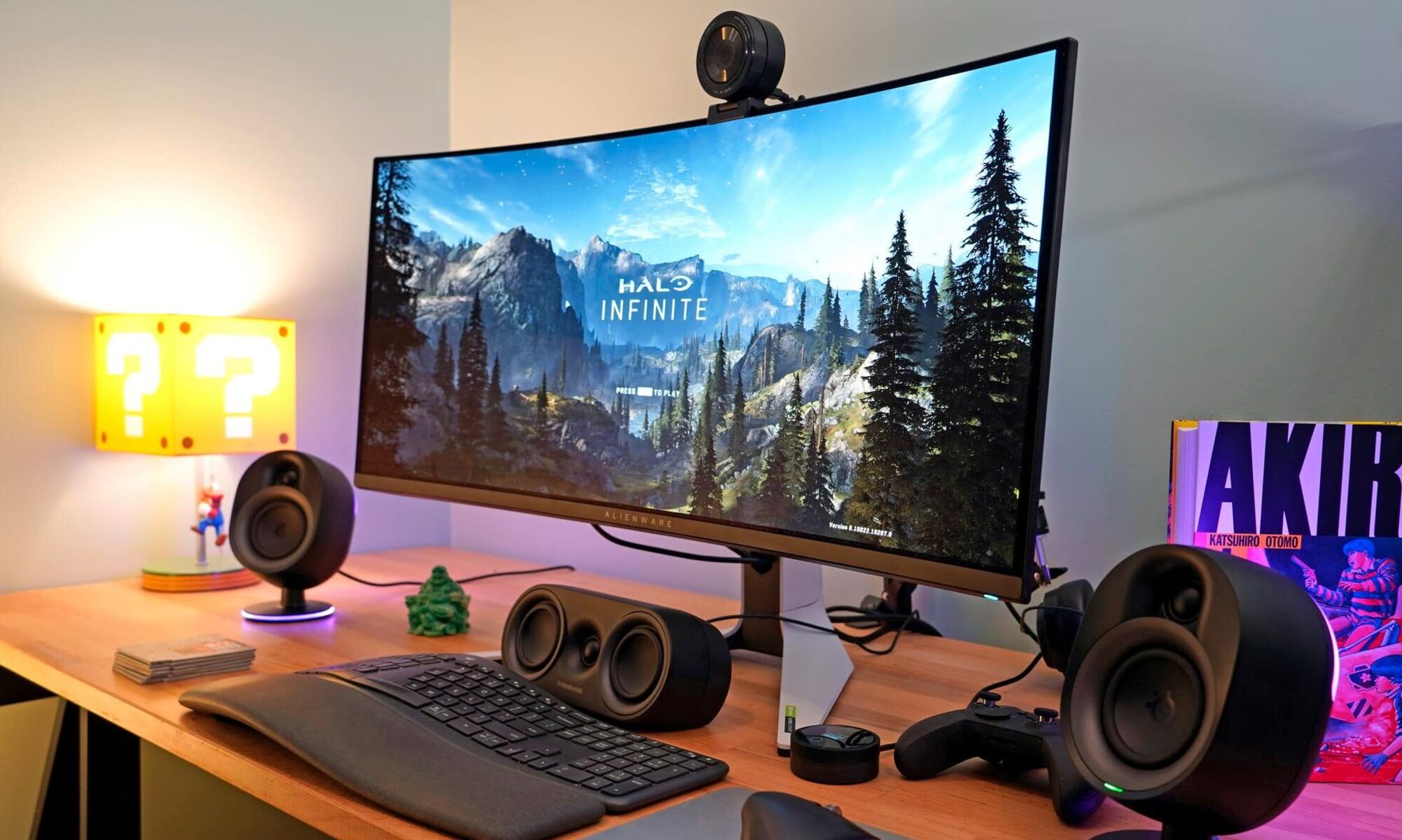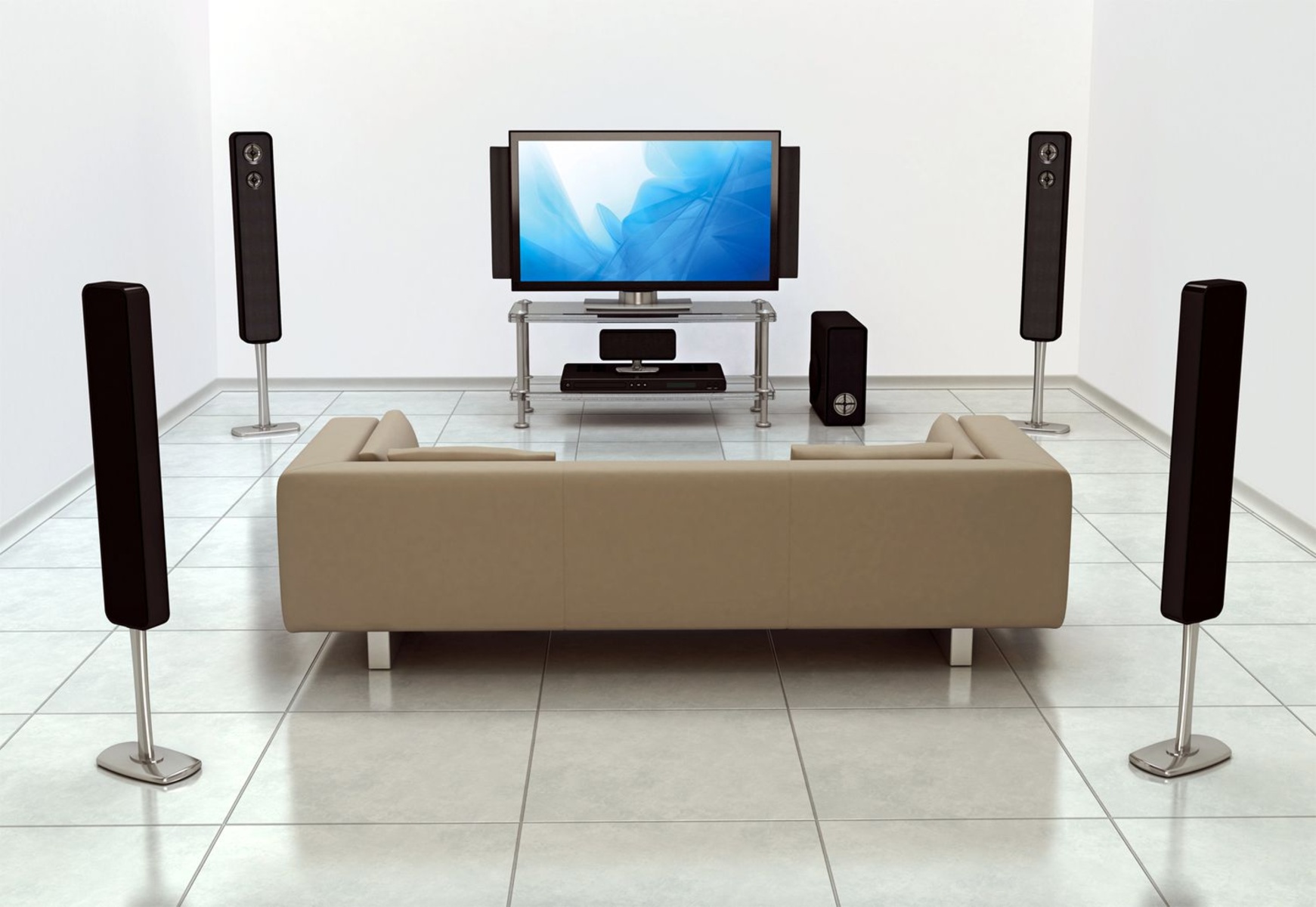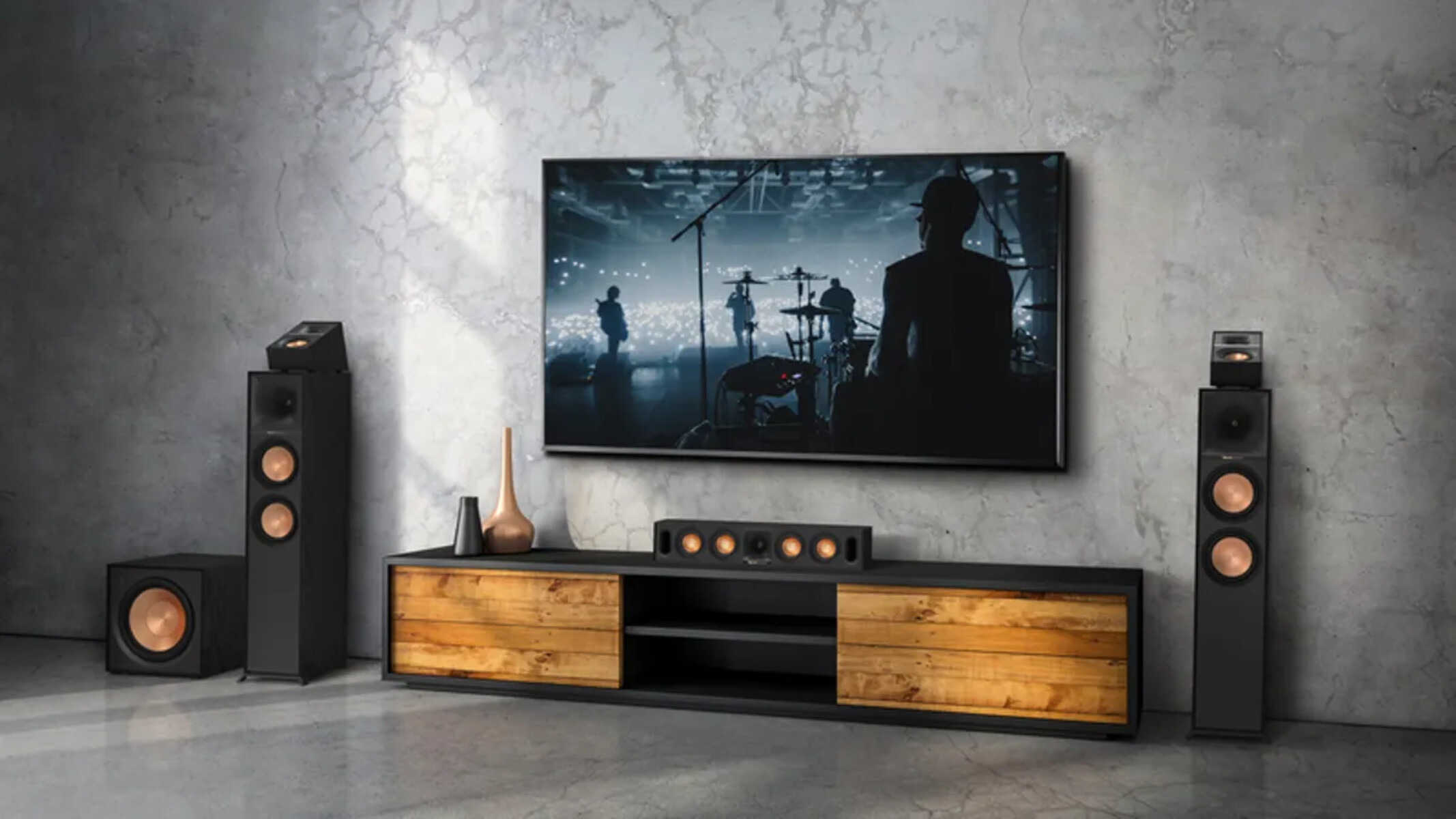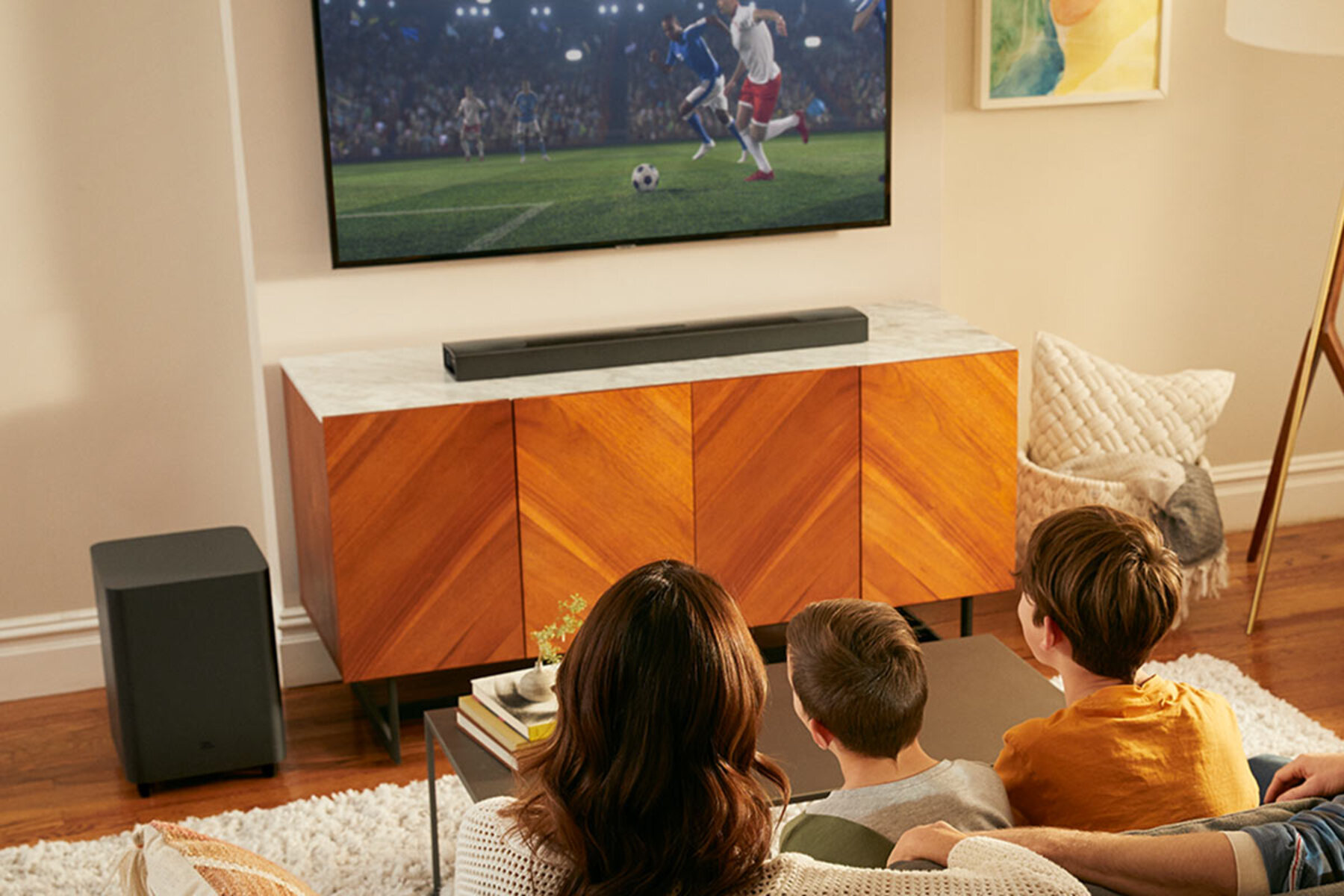Introduction
An equalizer is an essential component of a surround sound system that allows you to fine-tune the audio output and customize the sound according to your preferences. Whether you’re a music enthusiast, a movie buff, or a gaming aficionado, having a good understanding of what an equalizer is and how to use it can greatly enhance your listening experience.
So, what exactly is an equalizer? Essentially, an equalizer is a device or a software feature that adjusts the frequency response of audio signals. It allows you to boost or attenuate specific frequencies, giving you control over the tonal balance of the sound output. This means that you can amplify certain frequencies to make them more prominent or reduce them to achieve a more balanced sound.
The primary function of an equalizer is to compensate for the imperfections in the acoustic properties of the listening environment and the audio playback system. Every room and speaker setup has its own unique characteristics that can affect the way the sound is perceived. By making adjustments with an equalizer, you can compensate for these variations and achieve a more accurate reproduction of the audio.
There are different types of equalizers available, each with its own characteristics and capabilities. The most common types include graphic equalizers, parametric equalizers, and shelving equalizers. These types of equalizers differ in terms of their adjustability, frequency range, and overall control over the sound.
In this article, we will explore the different types of equalizers and discuss how to use them effectively on a surround sound system. We will delve into adjusting frequencies, setting up speaker levels, and fine-tuning the sound to optimize your listening experience. By the end of this article, you will have a solid understanding of equalizers and be equipped with the knowledge to enhance your audio setup.
What Is an Equalizer?
An equalizer is a device or software feature that allows you to adjust the frequency response of audio signals. It acts as a control panel for your sound system, enabling you to fine-tune the tonal balance and customize the audio according to your preferences. By boosting or attenuating specific frequencies, an equalizer lets you shape the sound and create a more pleasing listening experience.
The fundamental concept behind an equalizer is that different frequencies have varying levels of prominence in the audio spectrum. Some sounds may be too overpowering, while others may be too weak or even inaudible. An equalizer gives you the ability to adjust the volume level of specific frequencies, allowing you to bring out the desired elements of the sound and reduce any unwanted frequencies.
Audio signals are made up of a range of frequencies, from low bass tones to high treble tones. Each frequency corresponds to a specific range of pitch, and by manipulating these frequencies, you can shape the overall sound. For example, if you want to enhance the bass response in your audio, you can use an equalizer to boost the lower frequencies. Similarly, if you find that certain frequencies are too piercing or harsh, you can attenuate them to create a smoother sound.
Equalizers can be found in various audio devices, from home theater systems and car stereos to professional recording studios. They can be hardware-based, with physical knobs and sliders, or software-based, integrated into audio editing programs or media players. Regardless of the format, the main purpose of an equalizer remains the same: to provide you with control over the tonal balance of the audio to achieve the desired sound quality.
By understanding the principles of equalization and how to effectively use an equalizer, you can significantly enhance your audio listening experience. Whether you’re an audiophile seeking the perfect sound or just someone who wants to optimize their surround sound system, mastering the art of equalization can make a noticeable difference in the way you perceive and enjoy your audio content.
Function of an Equalizer
The primary function of an equalizer is to adjust the frequency response of audio signals. It allows you to control the tonal balance and shape the sound to your liking. By modifying specific frequencies, an equalizer can enhance or attenuate certain elements in the audio, resulting in a more pleasing and accurate listening experience.
One of the key functions of an equalizer is to compensate for the acoustic characteristics of the listening environment. Every room has its own unique acoustic properties, such as reflections and resonances, which can impact the way sound is perceived. An equalizer can help minimize these issues by adjusting the frequency response to match the room’s acoustics, resulting in a more balanced and natural sound.
Another important function of an equalizer is to compensate for the limitations of the audio playback system. Speakers and headphones have their own frequency response characteristics, which may not be perfectly flat. This means that certain frequencies may be overemphasized or attenuated, leading to an imbalanced sound. Using an equalizer, you can correct these deficiencies and achieve a more accurate and enjoyable audio playback.
An equalizer also gives you the ability to tailor the audio to suit different types of content. For instance, with music, you may want to boost the bass frequencies to add more depth and impact, or adjust the treble frequencies to make the vocals or instruments more pronounced. When watching movies or playing games, you may want to emphasize the dialogue or enhance the sound effects. By using an equalizer, you can easily make these adjustments and enhance the overall audio experience.
Moreover, an equalizer can be an invaluable tool for troubleshooting audio issues. If you notice that certain frequencies are overpowering or causing distortion, you can use an equalizer to reduce their intensity and restore a more balanced sound. Conversely, if some frequencies are lacking presence or clarity, you can boost them to bring out the desired elements in the audio.
Overall, the function of an equalizer is to provide you with control and flexibility over the sound. It allows you to tailor the audio to your personal preferences, compensate for room acoustics and audio playback limitations, and enhance the overall audio experience. Whether you’re a music lover, a film enthusiast, or a gamer, an equalizer is an essential tool that can significantly enhance the way you enjoy and appreciate audio content.
Types of Equalizers
There are several types of equalizers available, each with its own characteristics and capabilities. Understanding these different types can help you choose the right equalizer for your audio setup and achieve the desired sound quality.
1. Graphic Equalizer:
A graphic equalizer is one of the most common types of equalizers. It features a series of sliders or knobs that represent different frequencies. These sliders allow you to independently adjust the intensity of each frequency band. Graphic equalizers are often depicted in a graphical form, with a vertical representation of the frequency bands and adjustable sliders. They typically offer a set number of fixed frequency bands, such as 10 or 31 bands, giving you control over a wide range of frequencies. Graphic equalizers are intuitive to use and offer a visual representation of the adjustments made.
2. Parametric Equalizer:
A parametric equalizer provides more precise control over the audio frequencies. It allows you to adjust not only the intensity but also the center frequency and bandwidth of each EQ band. Parametric equalizers usually have fewer bands (typically three to five), but the ability to adjust the frequency center and bandwidth enables you to target specific problem areas or enhance specific frequency ranges with more precision. They are commonly used in professional audio setups where fine-tuning and precise adjustments are required.
3. Shelving Equalizer:
A shelving equalizer is designed to boost or attenuate frequencies above or below a certain threshold. It features a fixed frequency shelf that affects all frequencies above or below the threshold. For example, a bass shelving equalizer will boost or attenuate all frequencies below a specific cutoff point, allowing you to adjust the bass response. Similarly, a treble shelving equalizer can be used to enhance or reduce the high-frequency content. Shelving equalizers are commonly found in consumer-grade audio equipment and provide a simple way to adjust the overall bass or treble response.
Each type of equalizer has its own advantages and applications. Graphic equalizers are well-suited for general audio adjustments and are user-friendly, while parametric equalizers offer more precision and are ideal for professional audio setups. Shelving equalizers are great for overall tonal adjustments, particularly in consumer audio systems. Depending on your specific needs and preferences, you can choose the type of equalizer that best suits your requirements.
Graphic Equalizer
A graphic equalizer is a type of equalizer commonly found in audio equipment and software applications. It offers a visual representation of the frequency bands, typically arranged in a graph-like format, with individual sliders or knobs for each frequency band. Graphic equalizers are widely used due to their user-friendly interface and the ability to adjust a wide range of frequencies.
One of the key features of a graphic equalizer is that it allows you to independently control the intensity of each frequency band. The number of bands can vary, but common configurations include 10-band and 31-band equalizers. Each slider or knob represents a specific frequency range, allowing you to boost or cut that particular frequency to adjust the tonal balance.
The graphic representation of the equalizer provides a visual aid, making it easier to identify specific frequency areas that need adjustment. By moving the sliders up or down, you can increase or decrease the level of those frequencies, effectively boosting or attenuating them in the audio signal. This control over individual frequency bands allows for precise adjustments and fine-tuning of the sound.
Graphic equalizers are especially useful in compensating for room acoustics and audio playback system limitations. For example, if you find that the bass frequencies are lacking in your room, you can simply move the corresponding slider on the graphic equalizer upwards to boost those frequencies. On the other hand, if the treble sounds too harsh or overpowering, you can lower the corresponding slider to attenuate those frequencies.
Another advantage of graphic equalizers is their versatility. Since they cover a wide range of frequencies, they can be used for different audio applications. Whether you’re listening to music, watching movies, or playing games, a graphic equalizer allows you to tailor the audio to suit your preferences and the specific content you are consuming.
It’s important to note that while graphic equalizers offer a great deal of control and customization, it’s essential to use them judiciously. Overusing or extreme adjustments can result in an unnatural or unbalanced sound. It’s best to make subtle adjustments and listen to the changes in real-time to ensure a pleasant and accurate listening experience.
In summary, a graphic equalizer is an effective tool for adjusting and shaping the frequency response of audio signals. Its visual representation and individual frequency band controls make it user-friendly and versatile for various audio applications. Whether you’re a music enthusiast or a home theater enthusiast, a graphic equalizer can enhance your audio experience by allowing you to fine-tune the tonal balance to your liking.
Parametric Equalizer
A parametric equalizer is a versatile audio tool that provides more precise control over the frequency response compared to other types of equalizers. It allows you to adjust not only the intensity but also the center frequency and bandwidth of each EQ band, giving you greater flexibility in shaping the sound.
One of the key features of a parametric equalizer is the ability to adjust the center frequency of each band. This means that you can target specific problem areas or enhance specific frequency ranges with more precision. For example, if you find that the vocals in a song are being overshadowed by the instruments, you can use a parametric equalizer to pinpoint the frequency range of the instruments and reduce their intensity without affecting other parts of the audio.
In addition to adjusting the center frequency, a parametric equalizer also allows you to control the bandwidth, also known as the Q factor. The bandwidth determines the range of frequencies affected by the EQ adjustment. A narrow bandwidth focuses on a specific range, while a wider bandwidth affects a broader range of frequencies. This control over the bandwidth enables you to make subtle or drastic changes to the sound, depending on your requirements.
Parametric equalizers are commonly used in professional audio setups where precise adjustments are necessary. In live sound applications, such as concerts and events, parametric equalizers can be used to address specific acoustic challenges in the venue. By identifying problem frequencies and making precise adjustments, sound engineers can minimize feedback, improve clarity, and achieve a more balanced and accurate audio reproduction.
Besides live sound, parametric equalizers find extensive use in recording studios and post-production environments. Audio producers and engineers rely on parametric equalizers to shape the sound and achieve a desired sonic character during the mixing and mastering processes. The ability to make precise adjustments to specific frequencies allows them to correct any imperfections, enhance certain elements, and ultimately craft a polished and professional-sounding audio production.
While parametric equalizers offer a high level of control and precision, they do require a deeper understanding of audio frequencies and their interactions. It’s important to have a trained ear and a good understanding of the specific sound you want to achieve. Experimentation and careful listening are key to using a parametric equalizer effectively and getting the desired results.
In summary, a parametric equalizer provides precise control over the frequency response of audio signals. Its ability to adjust the center frequency and bandwidth of each EQ band allows for targeted adjustments and fine-tuning of the sound. Whether in live sound settings or professional audio production, a parametric equalizer is an essential tool that empowers audio professionals to achieve the desired sonic characteristics and deliver high-quality audio experiences.
Shelving Equalizer
A shelving equalizer is a type of equalizer that is commonly used in audio systems to adjust the levels of frequencies above or below a specific threshold. It provides a simple and effective way to boost or attenuate certain frequency ranges, allowing you to tailor the overall tonal balance of the audio.
The key characteristic of a shelving equalizer is its fixed frequency shelf, which affects all frequencies either above or below a specified cutoff point, typically referred to as the “shelf frequency.” By boosting or attenuating frequencies above or below this point, a shelving equalizer can significantly shape the bass or treble response of the audio.
For example, a bass shelving equalizer is designed to boost or attenuate frequencies below the shelf frequency, often set around 100Hz. By increasing the level of the lower frequencies, you can add depth and impact to the bass, enhancing the overall low-end presence in the audio. Conversely, if the bass is overpowering or boomy, you can attenuate those frequencies to create a more balanced sound.
Similarly, a treble shelving equalizer affects frequencies above the shelf frequency, typically set around 10kHz. Boosting the high frequencies can add clarity and sparkle to the audio, making vocals and instruments more pronounced. On the other hand, reducing the treble can soften harsh or sibilant sounds, providing a smoother and more pleasant listening experience.
Shelving equalizers are commonly found in consumer-grade audio systems, such as home theater setups and car stereos, as they provide a simple and efficient way to adjust the overall bass or treble response. They are often represented by dedicated bass and treble controls on audio devices, which allow users to make quick adjustments to the sound without having to dive into detailed frequency settings.
While shelving equalizers offer a convenient way to adjust the tonal balance, they are less precise in targeting specific frequencies compared to graphic or parametric equalizers. They provide a broad adjustment for all frequencies above or below the shelf frequency, affecting a wide range of sonic elements. Therefore, it is essential to use shelving equalizers sparingly and make subtle adjustments to maintain a natural and balanced audio reproduction.
Ultimately, the shelving equalizer enables users to quickly and effectively adjust the overall bass or treble response of their audio systems. Whether you’re looking to enhance the low-end impact in your home theater or smooth out the high frequencies in your car audio, a shelving equalizer provides a user-friendly solution for customizing the tonal balance to suit your listening preferences.
How to Use an Equalizer on a Surround Sound System
Using an equalizer on a surround sound system can significantly enhance your audio experience by allowing you to fine-tune the sound to your preferences and optimize the overall performance of your speakers. Here are some steps to help you effectively use an equalizer on your surround sound system:
- Adjusting Frequencies:
- Setting Up Speaker Levels:
- Fine-tuning the Sound:
- Continual Evaluation:
Start by identifying any specific frequency imbalances or issues in the audio. Is the bass too overpowering? Are the high frequencies too harsh? Use the equalizer to boost or attenuate the relevant frequency ranges to achieve a more balanced sound. Make subtle adjustments and listen to the changes in real-time to achieve the desired effect.
Ensure that the speaker levels in your surround sound system are properly balanced. Use a sound level meter or your ears to match the volume levels of all the speakers. This ensures that the sound is evenly distributed and provides a more immersive surround sound experience.
Experiment with different equalizer settings to find the optimal sound for your listening preferences. Pay attention to the specific content you are consuming, whether it’s music, movies, or games, and make adjustments accordingly. Trust your ears and make gradual changes until you achieve the desired sound quality.
Regularly re-evaluate your equalizer settings to adapt to different audio sources or changes in your listening environment. Different media formats, audio recordings, and room acoustics may require slight adjustments to maintain the best sound quality. Keep an open mind and be willing to fine-tune your settings to optimize the performance of your surround sound system.
It’s important to note that using an equalizer is a personal preference, and there’s no one-size-fits-all approach. What sounds good to one person may not sound the same to another. Trust your own ears and experiment with different settings to find the sound signature that suits your preferences and enhances your overall audio experience.
Remember, using an equalizer requires a balance of adjustment and subtlety. Overusing or extreme adjustments may result in an unnatural or unbalanced sound. Make gradual changes, listen carefully, and trust your judgment. With practice and experimentation, you’ll be able to achieve the best sound possible from your surround sound system.
Adjusting Frequencies
One of the key aspects of using an equalizer on a surround sound system is adjusting the frequencies to achieve the desired sound balance. By boosting or attenuating specific frequency ranges, you can fine-tune the sound and optimize your audio experience. Here are some steps to help you effectively adjust the frequencies on your equalizer:
- Identify Frequency Imbalances:
- Start with Small Adjustments:
- Listen and Evaluate:
- Consider Different Audio Content:
- Trust Your Ears:
Listen carefully to your audio content and identify any frequency imbalances. Does the bass sound too weak or overpowering? Are the high frequencies too harsh or lacking clarity? Pay attention to any areas where the audio may be unbalanced or lacking in certain frequencies.
Begin by making small adjustments to the relevant frequencies on your equalizer. It’s important to make subtle changes to avoid extreme adjustments that may result in an unnatural sound. Move the sliders or knobs incrementally, and listen to the changes in real-time to evaluate the impact on the sound.
Take the time to carefully listen to the adjusted sound after making the frequency adjustments. Determine if the changes have made a positive difference in the overall sound balance. Pay attention to the specific elements you are trying to enhance or reduce, such as the bass, vocals, or instruments, and ensure that the adjustments align with your desired sound preferences.
Keep in mind that different audio content may require different frequency adjustments. For example, music compositions with heavy bass may require a boost in the lower frequencies, while dialogue-heavy movies may benefit from a focus on the mid-range frequencies. Consider the specific audio content you are consuming and make adjustments accordingly to optimize the sound for that particular content.
Ultimately, trust your own ears and personal preferences when adjusting the frequencies on your equalizer. Everyone’s hearing and sound preferences are unique, so what sounds good to one person may not sound the same to another. Experiment with different frequency settings, listen carefully, and fine-tune the sound until it meets your desired sound quality.
Remember that adjusting frequencies on an equalizer is an ongoing process. As you become more familiar with your surround sound system and the capabilities of your equalizer, you may find the need to refine your frequency adjustments further. Regularly listen to a variety of content and evaluate the sound to ensure that the frequency adjustments are enhancing the overall audio experience.
By taking the time to adjust the frequencies on your equalizer, you can achieve a more balanced and optimized sound that aligns with your personal preferences and enhances your listening pleasure. With practice and experimentation, you’ll be able to fine-tune your audio system to deliver the best sound possible.
Setting Up Speaker Levels
When using an equalizer on a surround sound system, it is essential to ensure that the speaker levels are properly balanced. Achieving a balanced sound distribution among the speakers is crucial for an immersive surround sound experience. Here are some steps to help you set up the speaker levels effectively:
- Positioning the Speakers:
- Using a Sound Level Meter:
- Using Your Ears:
- Testing with Surround Sound Content:
- Fine-Tuning if Needed:
Start by positioning your speakers correctly in your listening space. Ideally, front speakers should be placed at equal distances from the primary listening position, while surround speakers should be positioned to the sides or behind the listener. Center speakers should be placed near the television screen or projection area for optimal dialogue clarity.
For accurate speaker level setup, consider using a sound level meter. Place the meter at the primary listening position and play test tones through each speaker, one at a time. Adjust the volume of each speaker until the sound level meter indicates the same decibel reading for all speakers.
If you don’t have a sound level meter, you can adjust the speaker levels using your ears. Play a familiar piece of audio content with balanced sound and sit in the primary listening position. Listen to the audio and make adjustments to the volume levels of each speaker until you perceive an even sound distribution.
Once the speaker levels are initially set, test your setup by playing surround sound content, such as a movie or video with surround sound effects. Pay attention to the sound movement and balance as it moves from speaker to speaker. Adjust the volume levels if necessary to ensure a seamless and immersive surround sound experience.
After the initial setup, listen to a variety of audio content, including music, movies, and games, to evaluate the speaker levels. If you notice any imbalances, make further adjustments as needed. Trust your own ears and personal preferences to achieve the best possible sound balance among the speakers.
Setting up the speaker levels in your surround sound system is essential for achieving an accurate and immersive audio experience. Balanced speaker levels ensure that sound effects and dialogue are presented with clarity and precision, enhancing the overall enjoyment of your surround sound setup.
Regularly re-evaluate the speaker levels as you make changes to your audio setup or if you notice any changes in the sound balance. By maintaining properly balanced speaker levels, you can optimize the performance of your surround sound system and enjoy a more immersive and engaging audio experience.
Fine-tuning the Sound
Once you have adjusted the frequencies and set up the speaker levels on your surround sound system, the next step is to fine-tune the sound to achieve the optimal audio experience. Fine-tuning involves making subtle adjustments to further optimize the sound quality and ensure it aligns with your personal preferences. Here are some tips to help you fine-tune the sound:
- Pay Attention to Specific Elements:
- Experiment with EQ Presets:
- Listen at Various Volume Levels:
- Make Subtle Adjustments:
- Regularly Listen and Evaluate:
Listen attentively to different audio content and pay attention to specific elements such as vocals, instruments, and sound effects. Identify any areas where certain elements may be overpowering or lacking presence. Make slight adjustments to the relevant frequencies on the equalizer to achieve a more balanced and pleasing sound.
If your equalizer has pre-programmed EQ presets, consider experimenting with different presets to find the one that best suits your audio content and preferences. These presets are designed to provide a specific sound signature, such as enhanced bass or a more prominent mid-range. Try different presets and choose the one that enhances your listening experience.
Take the time to listen to your surround sound system at different volume levels. Some audio content may sound better at lower or higher volumes, depending on the dynamic range and mixing of the content. Experiment with volume levels and find the sweet spot where the audio sounds balanced, detailed, and enjoyable.
When fine-tuning the sound, it’s important to make subtle adjustments rather than drastic changes. Small tweaks to the equalizer settings or speaker levels can have a significant impact on the sound quality. Avoid making extreme adjustments that may result in an unnatural or unbalanced sound. Trust your ears and make gradual changes to achieve the desired audio experience.
Fine-tuning the sound is an ongoing process, as your preferences and listening environments may change over time. Regularly listen to different audio content and evaluate the sound quality. Make adjustments as needed to adapt to different media formats, room acoustics, or personal preferences. Regular evaluation ensures that your surround sound system consistently delivers the best sound experience.
Remember to trust your own ears and personal preferences when fine-tuning the sound on your surround sound system. Each person may have different preferences for bass, treble, or overall sound balance. Experiment with different settings, trust your judgment, and make adjustments that deliver the most satisfying and immersive audio experience for you.
Fine-tuning the sound ultimately allows you to customize your surround sound system to your unique preferences and optimize the audio quality according to your specific content and environment. By making subtle adjustments and paying attention to the details, you can achieve a truly immersive and enjoyable audio experience.
Conclusion
Using an equalizer on a surround sound system provides you with the power to fine-tune the audio and create a customized listening experience. Whether you’re a music enthusiast, a movie lover, or a gamer, understanding how to effectively use an equalizer can significantly enhance the way you enjoy and appreciate audio content.
Throughout this article, we explored the concept of an equalizer and its function in adjusting the frequency response of audio signals. We discussed the different types of equalizers, including graphic equalizers, parametric equalizers, and shelving equalizers, each with its own characteristics and capabilities.
We also delved into the practical aspects of using an equalizer on a surround sound system, from adjusting frequencies to setting up speaker levels and fine-tuning the sound. By making careful adjustments and trusting your ears, you can achieve a balanced and optimized sound that aligns with your preferences.
Remember, the process of using an equalizer is personal and subjective. What sounds good to one person may not be as pleasing to another. Trust your own judgment, experiment with different settings, and make gradual adjustments to find the sound that suits your preferences and enhances your listening experience.
Furthermore, it’s crucial to regularly evaluate and adapt your equalizer settings based on different audio content, room acoustics, and personal preferences. Sound is dynamic, and what may work well for one type of content or environment may not be ideal for another.
In conclusion, with a solid understanding of what an equalizer is and how to use it, you have the power to unlock the full potential of your surround sound system. By fine-tuning the sound, adjusting frequencies, and setting up speaker levels, you can create a truly immersive and personalized audio experience that brings your favorite movies, music, and games to life.









